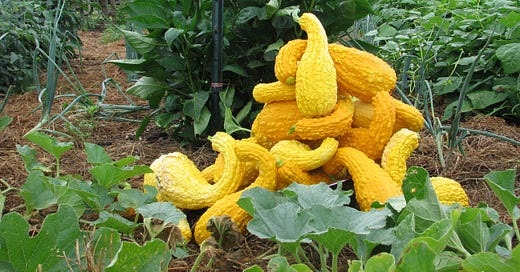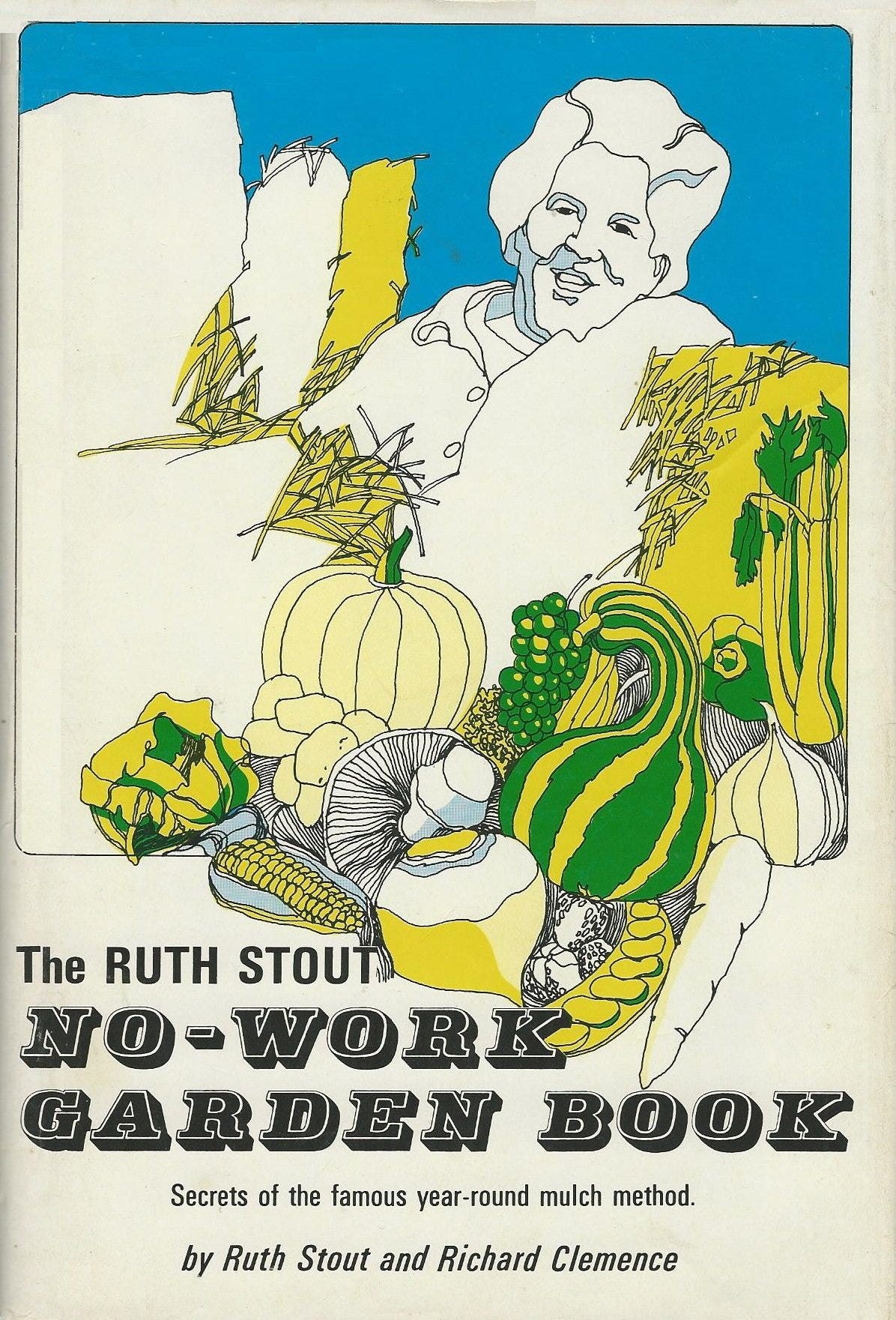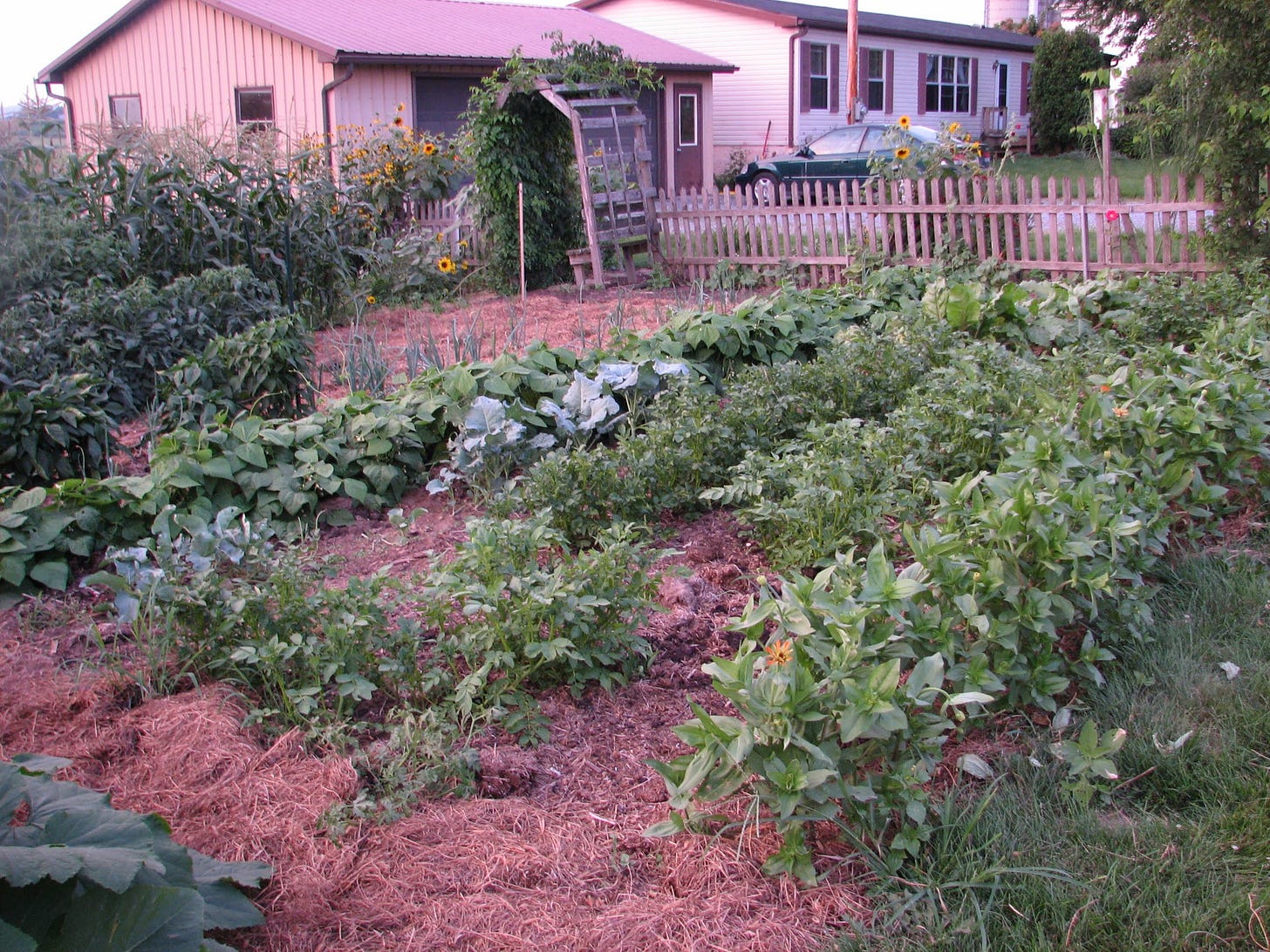The garden of my childhood stands in stark contrast to the garden I have now.
I remember widely spaced rows with fluffy crumbly tilled soil between. Besides plowing and rototilling every spring, we regularly tilled between rows as blankets of weeds emerged. Those blankets spread into the crop rows themselves, where the tiller couldn’t reach, requiring hours of hoeing and hand weeding, the exact jobs I loathed as a young boy.
I didn’t like gardening.
Until I was 23.
My wife told me about an old book her mom read many years before, and how that book changed the way she gardened and transformed her heavy, dense clay into a rich, black, chocolate-cake like soil that grew abundant and beautiful veggies without much work.
When we we started our family garden, she convinced me to garden this way. So we gathered old hay from our farming neighbors, made our own compost, and assembled whatever organic materials we could get our hands on, spreading them out over the entire surface of our maybe 900 square foot garden.
When planting time came, we raked back the mulch, planted our seeds and plants, and watched them grow. Throughout the season, we layered on more mulch as needed to keep down the weeds, hold in the moisture, and feed the soil.
The results speak for themselves.
Virtually no watering or weeding, yet lush crops and abundant yields.
Yes, we learned a few lessons the hard way (like never put fresh, hot manure pack on root crops!), but I was hooked. I learned to appreciate the look of heavily mulched pathways rather than loose crumbly soil. Because I knew what each one meant.
It’s the meaning and understanding that gives it the beauty. And for me, mulch was now more beautiful than exposed soil, no matter how dark and crumbly and rich that soil was.
By the time I was ready to start a market garden a few years later, the no-till method was a no-brainer. I didn’t own a tiller or a tractor or a plow. I didn’t want to rent one. And even more, I didn’t want the bother of working up the soil every time I needed to plant something.
I had seen no-till work, and I was addicted to it’s simplicity and ease.
Why bother tilling if all I had to do was put seeds in the soil?
Don’t get me wrong, I made many mistakes, and not everything was easy along the way. I’ll address the lessons I learned in other posts.
But for now, starting a garden is as easy as laying down some compost, soil, or mulch, and then putting seeds in contact with the soil.
And for now, I’ll take a garden that’s less work.
That’s why my 2025 garden will be no-till.
More to come…






To clarify, I live east of Maine and I know nothing about gardening in North Carolina. I wish you good luck with whatever you do!
I just ordered the used book. I get tired of gardening about mid summer. Maybe this will keep me going. Thanks!